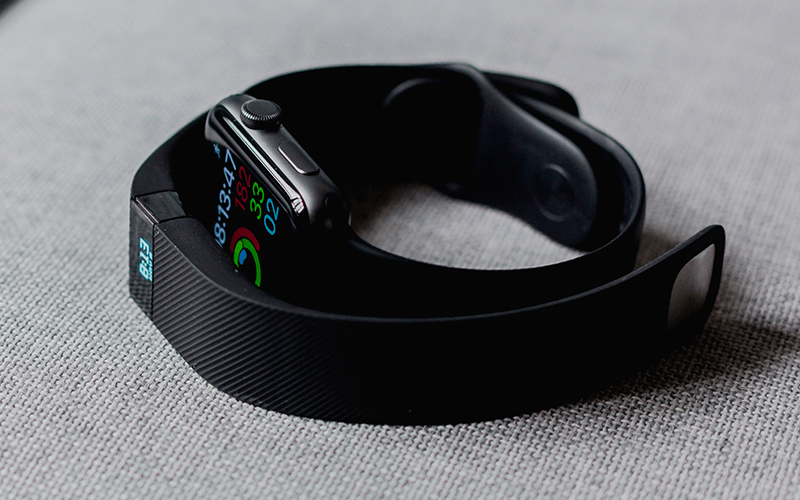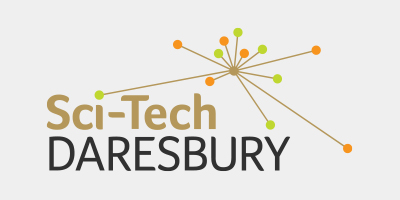January 30, 2019
Wearable Technology in Healthcare
Intelligent Guardians for Your Health

The future of wearable healthcare technology looks good. Announcing the new Apple Watch Series 4 in September 2018, Chief Operating Officer Jeff Williams described it as an “intelligent guardian for your health.”
These new products marry advanced communication and sensor technology with AI and other emerging IoT technologies to enable much better health monitoring, with potentially massive applications in healthcare and medical intervention. These applications are going to be generating tremendous amounts of data, which will need to be sifted, analysed and utilised by advanced data facilities like the Hartree Centre.
There are two overlapping fields, in this growing sector of the healthcare market, which we might call professional and consumer. There is advanced technology for the use of qualified medical staff, and personal devices for monitoring health, fitness, and things like dieting - which are cheaper and available for people to buy now - like the Apple Watch.
The Near Future
A report from Markets and Markets predicts that the global uptake for medical wearable devices is likely to reach £9.37 billion by 2021, with North America and Europe being the largest market worldwide, with approximately 70% of the total. With ageing populations, developed countries will need to implement these advances to cope with demand.
Like all nascent technologies, these devices will need to evolve and find their niche. Some will be fads, others will fail, and some will become as ubiquitous as smartphones. Doctor-patient relationships will change. Today you consult a medical professional when you are ill – after the treatment, you go away and probably do not see them again until the next time they are needed. In future, wearable systems will be continuously monitoring your health and health AI diagnostics will alert a clinician to contact you if something is going wrong. Preventive medicine is more valuable than treating something when it is at an advanced stage, but this was not generally possible until now, except by advice to eat five portions of vegetables and not be overweight, which is good but not person-specific.
Advanced Wearable Medical Technology Being Developed Now
UV-Sensing Fingernail
Overexposure to sunlight can increase skin ageing, which is a minor complaint, and also severe issues such as skin cancer. The cosmetics firm L'Oreal is working on a tiny wearable, 9 mm long, which attaches to your thumbnail for two weeks to monitor exposure to dangerous sunlight (it is little-known, but some UV can penetrate through clouds so you might be suffering from overexposure on an overcast day). The battery-less UV Sense then can download the data to a smartphone for analysis and recommendations.
Breast-Cancer detecting Bra
On a far more serious note, breast cancer is one of the most common killers of women: There were over 2 million new cases globally in 2018. Early detection is crucial. Unfortunately, many women do not attend screenings and find out too late for effective treatment. iTBra, created by Cyrcadia Health, uses a bra insert to monitor metabolic changes in breasts which correlate to accelerated cellular activity common in these kinds of tumours. The data is sent directly to a PC or mobile device and is readily shared with medical professionals.
The Heart of the Matter
KardiaMobile and KardiaBand are wearables which take medical-grade ECGs to detect unnatural rhythms in the heart. Atrial Fibrillation is a common condition where the heart beats in an irregular way and can lead to strokes. The makers, AliveCor, have two products, available on the marketplace now for a reasonable £99: a fingertip sensor, which communicates with most smartphones and tablets on Android and iOS; and a wearable watch strap which attaches to your Apple Watch - paired with an iPhone it will diagnose heart rhythms.
This has various testimonials from doctors and patients on its site, and appears to be gaining support in the healthcare marketplace – it is a benefit to the user to have continuous monitoring and to be free of hospital appointments to wait for an ECG.
Air Pollution Monitoring via Inhalers
Louisville in the USA has particularly poor air quality, although that is a problem for many urban areas. In the UK, Putney High Street was a notorious air pollution blackspot, until the council and other authorities took strong action to reduce NO2, particulates and other noxious fumes in the vicinity in the last couple of years.
In Louisville in 2015, an air pollution sensor was attached to 1200 rescue inhalers used by the emergency services to administer first aid. The results of 250,000 puffs were mapped and tracked by GPS, and the sensor also recorded pollution and weather conditions. The results showed some particular "pollution hot spots", and these were used for outreach programmes and public health information to help citizens, especially those with breathing problems like asthma, to know about areas to avoid.
The Medical Internet of Things (MIoT)
In our busy lives, we often do not have time to go to the doctor unless we think something is serious: which may be too late. Medical professionals often do not have the full picture and may not order a complete battery of tests to diagnose something. Going to a clinic for evaluations can take up significant amounts of time.
Preventing a medical emergency or finding out about a condition in the early stages is much preferable to a sudden need for intensive or invasive medical treatment later on.
Clearly, there will be a substantial new market for smart, portable, wearable devices to communicate data about health issues. Conveniently, most people have a smartphone or tablet capable of recording, storing and transmitting this data.
Unfortunately, there are some drawbacks: the devices may not create data that is of an appropriately high medical standard. This means that they are useless to clinicians. It also means that tools have to be extensively tested and certified by the appropriate medical authorities. Thereby increasing their cost to the user and delaying considerably the time to market. By using agile manufacturing methods and rapid prototyping, of the kind available at Sci-Tech Daresbury’s Campus Technology Hub, MIoT projects can move this process forward more expediently.
Security of data is a huge issue for the user generation device and also at the receiving end: you don't want to be broadcasting about significant health issues to anybody nearby.
Overall, MIoT wearables will be a big part of our, and our children and grandchildrens' future. As the noted science fiction writer William Gibson said, "The future is here. It’s just not widely distributed yet.”



